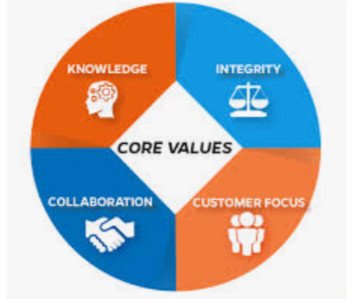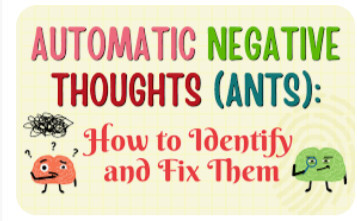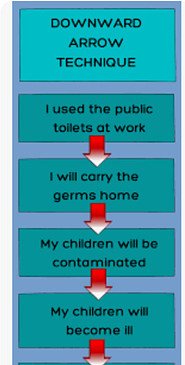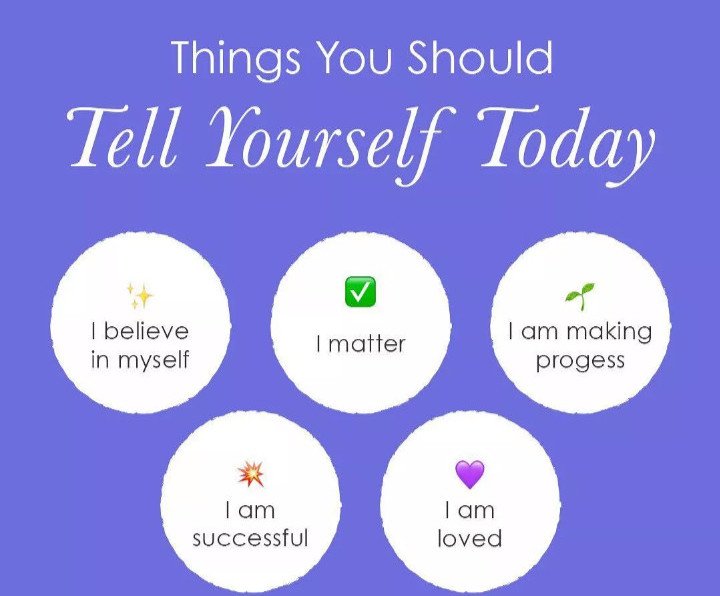Changing Core Beliefs – Set in Stone by Age Seven
As an Amazon affiliate, I earn from qualifying purchase at NO extra cost to you.

Whether you struggle with self-esteem, relationship issues, lack of confidence, or if you have difficulty managing your weight, oftentimes, the underlying problems stem from core beliefs. These beliefs are instilled and embedded in our minds subconsciously from early childhood. Changing core beliefs is key. Even though some of these beliefs have a positive effect on us, some don’t.
Changing Core Beliefs
Core beliefs are the very essence of how you see yourselves, other people, the world, and the future. Core beliefs are formed in early childhood and are steeped in childlike and adolescent thinking. Although there is nothing wrong with adolescent thinking, these thought patterns lack the insight and understanding that comes with greater life experiences. However, changing core beliefs in adulthood is sometimes necessary. For example, adolescent thinking may:
- Ignore consequences
- Favor immediate gratification over long-term goals
- Rely on stereotypes or prejudices
- Be very self-centered, or “egocentric.”
- Lack practicality and flexibility
- Less able to integrate opposing or conflicting ideas.
This is why it is important to acknowledge and change your core beliefs and change them to a healthier, mature thinking style (betterrelationships.or.au).
Why Core Beliefs Matter?

Core beliefs are our most deeply held assumptions about ourselves, the world, and others. They are firmly embedded in our thinking and significantly shape our reality and behaviors. In fact, nothing matters more than our core beliefs. Her are a few examples of Core Beliefs.
Examples of Core Beliefs
Any deep belief that is fundamental to a person’s interactions with the world or their sense of self is a core belief. These beliefs are positive, negative, or neutral (Medical News Today). Here are a few examples:
- Every person is either good or bad
- No one likes me because of my weight
- I am intelligent and resourceful
The Root Causes of Problems
Core beliefs are the root causes of many of our problems, including our automatic negative thoughts. They are beliefs based on childhood assessments. However, core beliefs are often untrue.
Beliefs are Often Untrue
Core beliefs influence everything we do. They are shaped by your childhood experiences, and are deeply ingrained beliefs. Unfortunately, they lead to cognitive distortions, meaning you get an inaccurate view of reality. Core beliefs are either positive or negative. They show up as:
- Automatic Negative Thoughts (ANTS)
- They are self-perpetuating like magnets
- It is possible to change them.

Common Examples of Core Beliefs
- Love is good
- You should help people in need
- I am a loser (I can’t do anything right)
- I am smart (I will succeed if I try)
- I am unlovable (Nobody will ever appreciate me)
- I don’t trust anyone (People will take advantage of me)
Beliefs Set in at Age Seven
Psychologists believe that by the age of seven, most of our patterns of behavior, our beliefs and our habits are formed. These beliefs are molded by the significant people in our life, especially our mother and father. Personal values, attitudes and beliefs are formed and bonded over time through influences of family, friends, society, and life experiences. There are ways to identify core beliefs.
Ways to Identify Beliefs
Noticing Your Thoughts
Pay attention to automatic thoughts. These are the thoughts you often don’t notice. By becoming more aware of them, you will start to notice any consistent themes or patterns.
Keep a Diary
Journaling helps you record your thoughts and feelings. You can check back to see your progress. Make a special note of stressful or intense times. You can also use a tablet to do journaling.
Ask Questions
Once you notice a pattern in your thoughts, you begin to explore your core beliefs that underlie your thoughts.
Consider the Evidence
Consider what beliefs you have WITHOUT evidence. If you find that you cannot change a belief despite having strong evidence ,that it is not true, it is probably your core belief. Ask yourself “Is there objective evidence for me to think this way? What proof do I have? Is there an alternative thought I could be thinking?
Use the Downward Arrow

You can find your core beliefs by using the downward arrow technique. This involves following each thought down to the basement; to the underlying belief it came from. To begin, recall a thought about yourself that you have often, such as “I procrastinate too much.” Ask yourself, “What does that mean about me?” According to Aaron Beck, known as the father of cognitive therapy, there are three interrelated areas of core beliefs.
Aaron Beck (1979) Three Interrelated Levels of Cognition
- Core Beliefs
- Dysfunctional Assumptions
- Negative Automatic Thoughts
Dysfunctional Assumptions
Dysfunctional assumptions are rigid, conditional ‘rules for living’ that people adopt. These may be unrealistic and maladaptive thought patterns. An example is the thought: “If I am criticized, then I am no good.” ‘If I try, I will fail.” A positive assumption is: “If I do everything right, I will be good enough.” Core beliefs are often compounded by automatic negative thoughts (ANTS).
Automatic Negative Thoughts
Automatic negative thoughts are expressions of our dysfunctional assumptions and negative core beliefs. They are reactions that compel people to interpret many situations in unbalanced, upsetting ways. They cause us to feel unpleasant emotions such as:
- Sadness
- Anger
- Low self-esteem
Replace Automatic Thoughts with Healthier Thoughts
Just repeating positive affirmations isn’t very helpful. But deliberately reframing a negative thought into a healthier thought creates a better emotional state. This helps build new thought patterns. The new thought must be:
- Realistic: Based on real evidence.
- Objective: No room for interpretation
- Constructive: Helps us advance rather than put yourselves down.
Identify One Core Belief at a Time
For the best results, try to focus on one core belief at a time. First notice how that core belief makes you feel. Once you work through your negative core belief and tackle it, you have the tools to get through other core beliefs. Become proactive in your core beliefs quests. Write down themes, labels, and words that come to mind. Also, include the following questions:
- What do your negative self-evaluations say about you as a person?
- What are the common themes, labels, words, or names you used to describe yourself?
- Do these remind you of self-evaluations and remind you of criticism from others when you were young? Keep probing to find out what things make you critical of yourself.

What Things Make You Critical of Yourself
Develop an alternative core belief to replace your old, negative one. Aim for something more positive, balanced, and realistic. If you disliked your birthmark on your forehead, be less critical and be grateful for being born in the first place. Turn your self-critique to an attitude of gratitude. There are negative life experiences that we all have. Don’t sweat the small stuff.
Negative Life Experiences
Negative life experiences are attributed to low self-esteem. Life experiences can make you critical of yourself. It could also provide clues to your core beliefs. Reflect on these experiences and ask yourself the following questions:
- Did these experiences lead you to think something was off about you in some way?
- Can you identify specific instances when these negative thoughts surfaced.
- Can you link these situations to a certain person?
- Did they use certain words to describe you?
- What did their treatment say about you as a person.
How Do You Question Your Core Beliefs?
There are several ways to assess core beliefs. You can use the downward arrow technique. This involves following each thought down to the basement, to the underlying belief it came from. First, recall a thought about yourself that pops into your mind often. Ask yourself, “What does this thought mean about me?” “Why are my core beliefs so hard to change?” I know you are better than this.
Why are Core Beliefs Hard to Change?
Beliefs are hard to change because we’re hard-wired to feel great about standing our ground. Beliefs are deep-rooted in us beginning in early childhood. They are unconsciously embedded into our brains over time. Therefore, it is time to challenge your core beliefs. Are you ready?
How do You Challenge Core Beliefs and Change Them?
First, view the change process as a marathon rather than a sprint. It will take time to change a core belief. It does not happen magically overnight. The first step is to create a positive alternative to the negative core belief. Also, remember that these beliefs can appear from thin air. They come from an influence source. Here is an example: https://youtu.be/wKpTqRzu9HM
What are Core Beliefs Influenced By?

Core beliefs influence everything you do. So changing them is an art and science. They are shaped by your childhood experiences. Many of us have inherited some awesome core beliefs. As a result, we grow up to become successful, resourceful individuals. This is not always the case. However, have no worries, it is never too late to change your script.
Final Thoughts
We all have the power to reverse our gears of thinking. We can all change our core beliefs if they don’t serve value to our life. Core beliefs are the basic beliefs about you, other people, and the world you live in. They are things we hold to be absolute truths deep down, underneath our surface thoughts.
Thank You
Thank you for joining me in my quest to excavate our core beliefs. I hope you had fun. Essentially, your core beliefs determine how you perceive and interpret the world. They sit, literally, in the basement of your mind. Are you ready to replace your old core, non-productive beliefs in exchange for new beliefs of value, strength, and empowerment? Awesome. Please share your experiences and leave your comments and feedback in the space provided. I look forward to hearing from you soon.
Rachele, Founder
W: mybluegenes.com
E: rachele@mybluegenes.com

Your article about core beliefs really resonates with me.
Especially, the part about how our family, friends, neighbors and teachers influence our core values and beliefs and the way we think. The good news is that we can changes our core beliefs overtime by changing the way we think and behave. At the end of the day, we want to become the best version of ourselves.
Michele
Hi there, Michele.
I see that my article regarding core beliefs resonates with you. Studies show that these core beliefs are acquired in early childhood. These include our attitudes, characteristics, behaviors, beliefs and limiting beliefs absorbed from individuals in our environment. Therefore, in essence our core values are shaped a d developed from parents, siblings, community leaders, and educators. The good news is that our negative core beliefs and values can be changed over time.
Rachele
Being a father I definitely agree with everything in this post. Core beliefs at a young age is something that is very import for a child. The age of seven is when children pretty much start making decisions for themselves. Those decisions will be based on what they have developed up until that point. Awesome post.
Hi there, KD
Thank you for taking time out of your busy schedule to read and comment on my post related to changing core beliefs. We, as parents, are the life coaches and personal trainers of our children. We all want our children to be productive contributors of society.
Therefore, we strive to lead by example and model our best traits and characteristics. You, as a father, play a major role in helping shape the life of your child/children. Your child’s future is in your hands. All the best to you as you fulfill your role as a father, sharing your values and core beliefs with your child/children.
Rachele